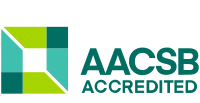
Photo from wikipedia
Background & Aim Background The aim of JACIE accreditation is to improve the quality of hematopoietic stem cell transplantation in Europe by providing a means whereby transplant centers, stem cell… Click to show full abstract
Background & Aim Background The aim of JACIE accreditation is to improve the quality of hematopoietic stem cell transplantation in Europe by providing a means whereby transplant centers, stem cell collection facilities and processing facilities can demonstrate high-quality practice. Our aim is to show Macedonian experience in implementing the quality management system and our first steps in achieving the JACIE accreditation in order to provide our patients and donors the best possible care. Methods, Results & Conclusion Methods We are obtaining the maintenance of QMS through the establishing of the ISO standardization for the whole institution (ITM). The two of our colleagues became the JACIE Inspectors and the standard operating procedures (SOPs) were developed, followed by regular meetings, trainings and self-evaluation of the personnel. We had orientation visit from the independent JACIE inspector in order to come one step closer to the JACIE accreditation and to improve our overall QMS. Results There is a national regulatory framework in place and WHO and World Bank initiatives in Macedonia which support quality in health care and accreditation. The Institute for Transfusion Medicine of RM was a part of the IPA project “Strengthening the Blood Supply System”. This project aimed to ultimately bring the Blood Transfusion Service to European Union standards allowing the exchange of blood components and all other types of collaboration with other European Union countries in future. The project put the basis for unification of blood transfusion standards and operating procedures in the whole country as well as set up essential education of blood transfusion personnel. Document Management System was developed in order to improve our QMS. During the orientation visit from the JACIE inspectors were found a lot of strengths in our QMS, but there are still a lot of areas for improvement. Our strengths are motivated team and supportive institutional leadership including Macedonian Ministry of Health. Areas for improvement are: labeling of cellular therapy products and lack of laboratory for quality control. Conclusion We continue to work according to the quality management and improve our everyday service continuously. Working by standards, following the rules and regular self-evaluations will help us to maintain the strong quality management system.
Journal Title: Cytotherapy
Year Published: 2020
Link to full text (if available)
Share on Social Media: Sign Up to like & get
recommendations!